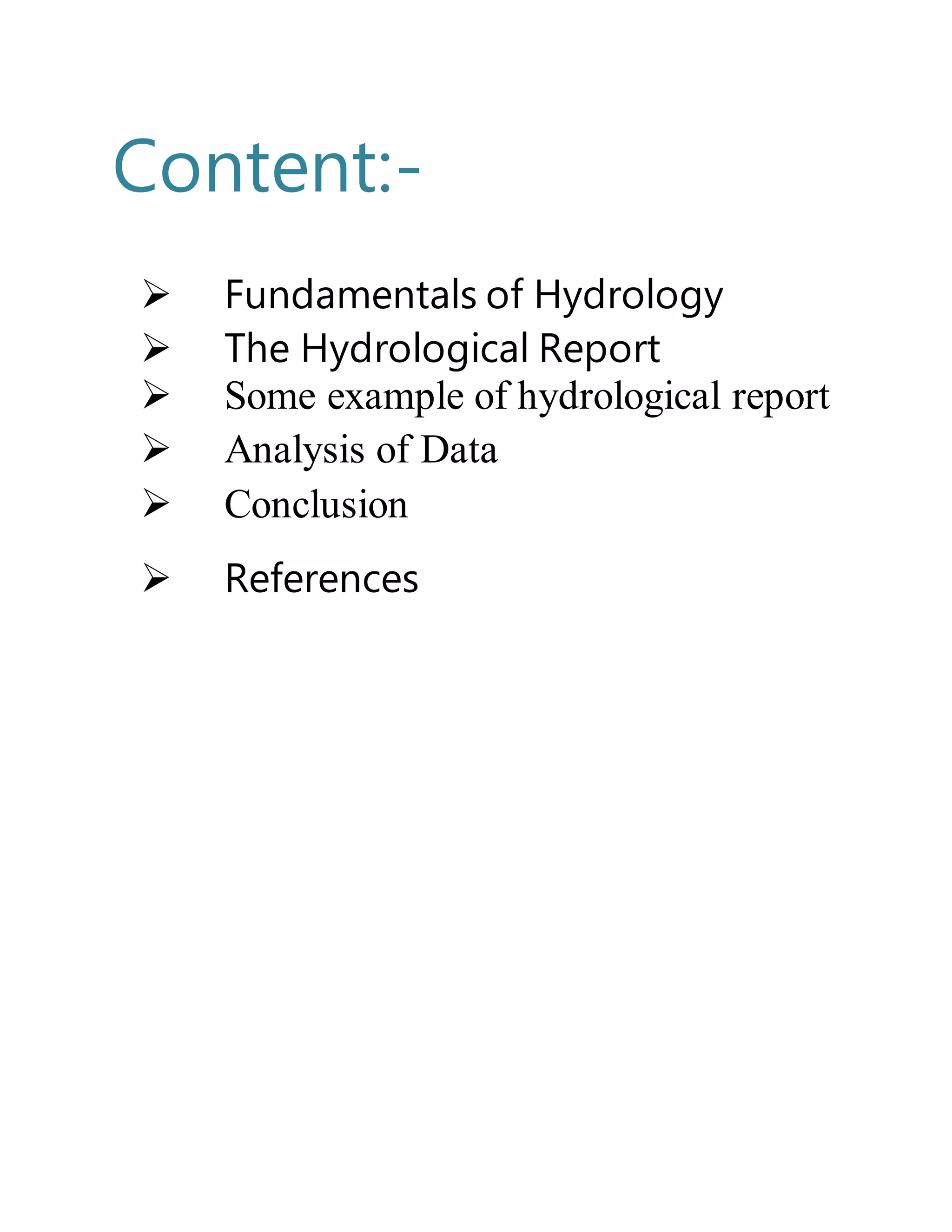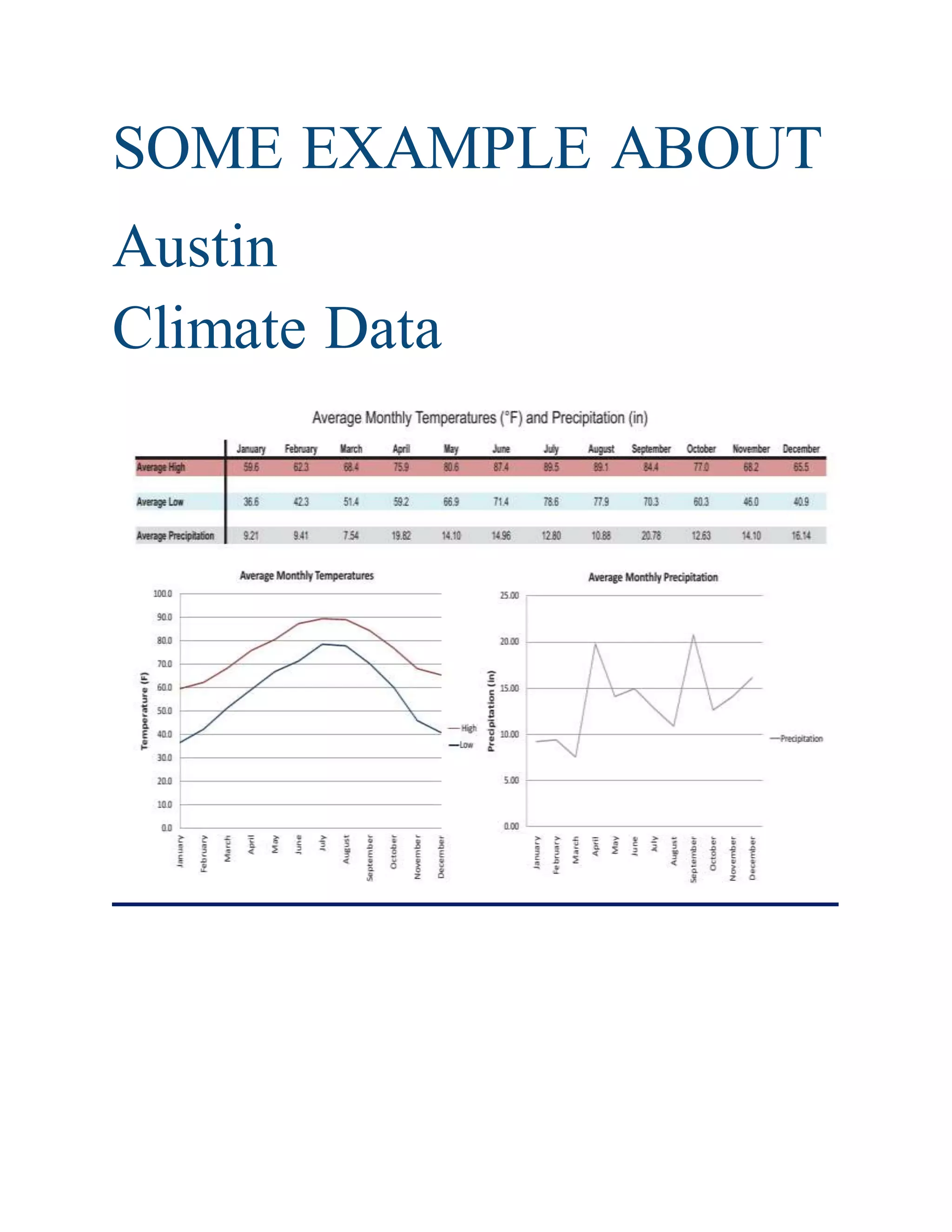This document provides an overview of hydrology and the hydrological cycle. It discusses key concepts in hydrology including evaporation, condensation, precipitation, interception, infiltration, and runoff. It also provides details on the percentage of the world's water resources that are fresh water versus salt water. The document is a student report submitted to their professor that covers fundamentals of hydrology, examples of hydrological reports, and data analysis.
![Gaziantep University
15
A TYPICLA HYDROLOGICAL
REPORT
[Type the document subtitle]
arkan.hamza@hotmail.com](https://image.slidesharecdn.com/atypiclahydrologicalreport1-151205202647-lva1-app6891/75/A-typicla-hydrological-report-for-engineering-projects-1-2048.jpg)




































